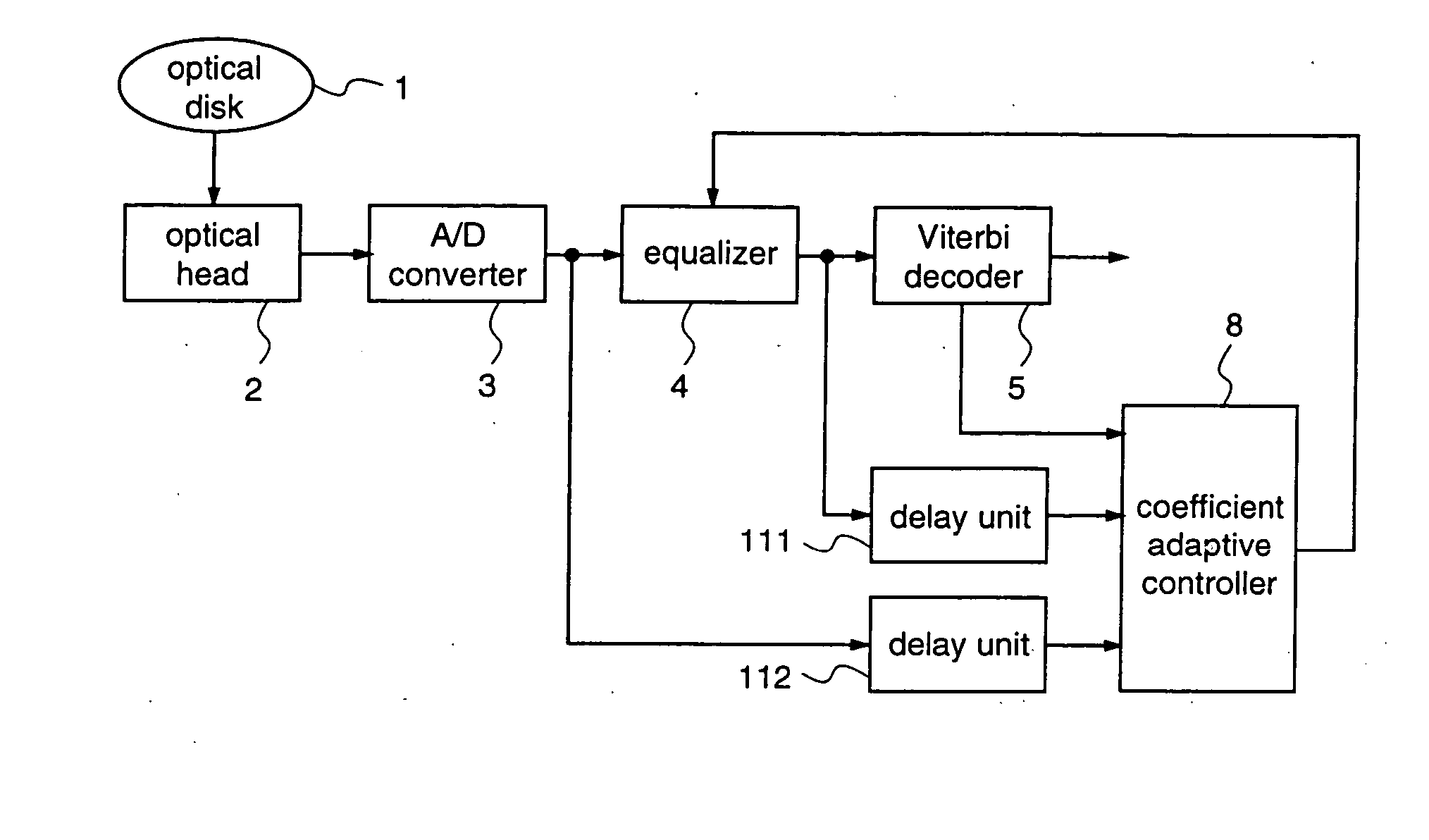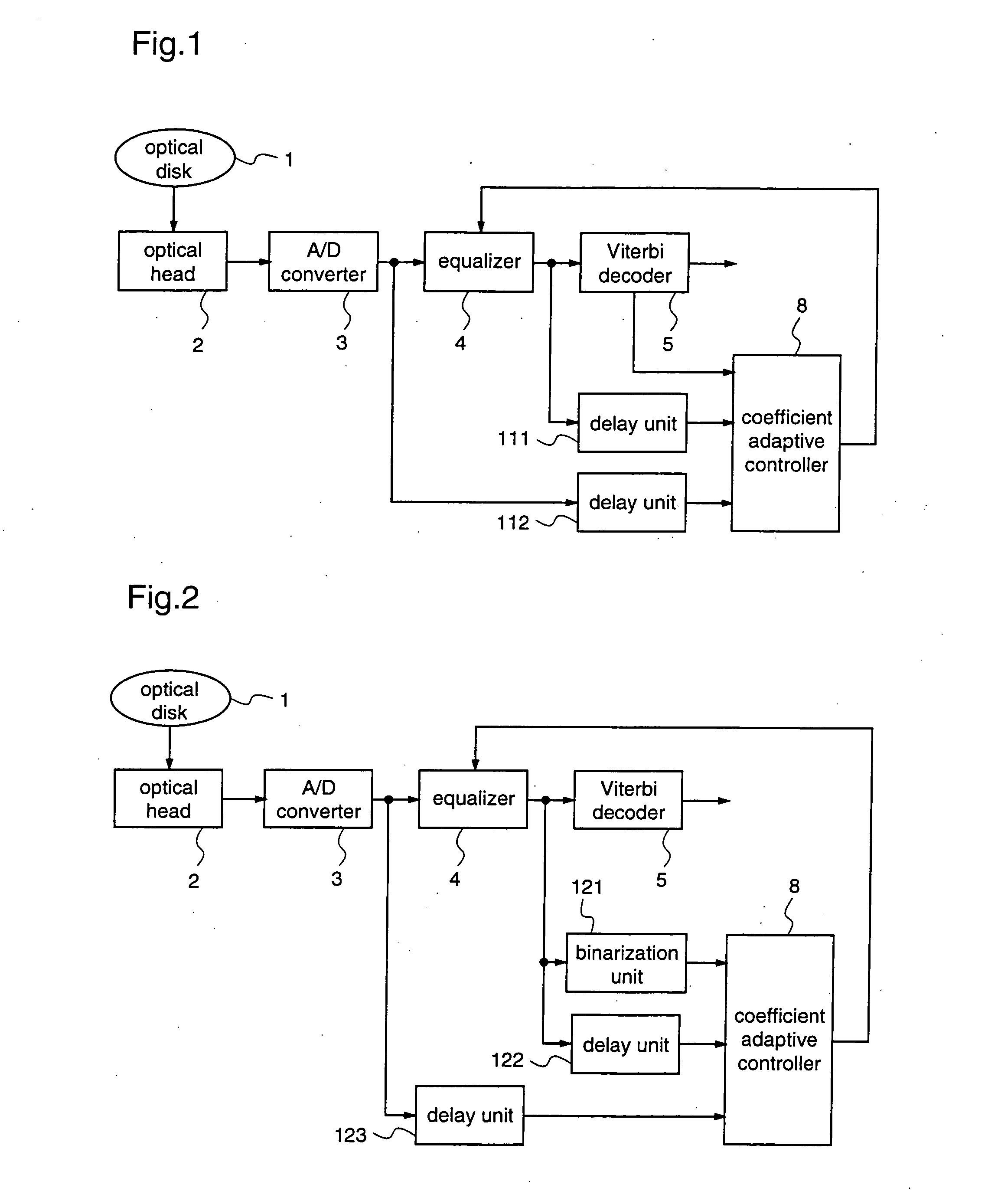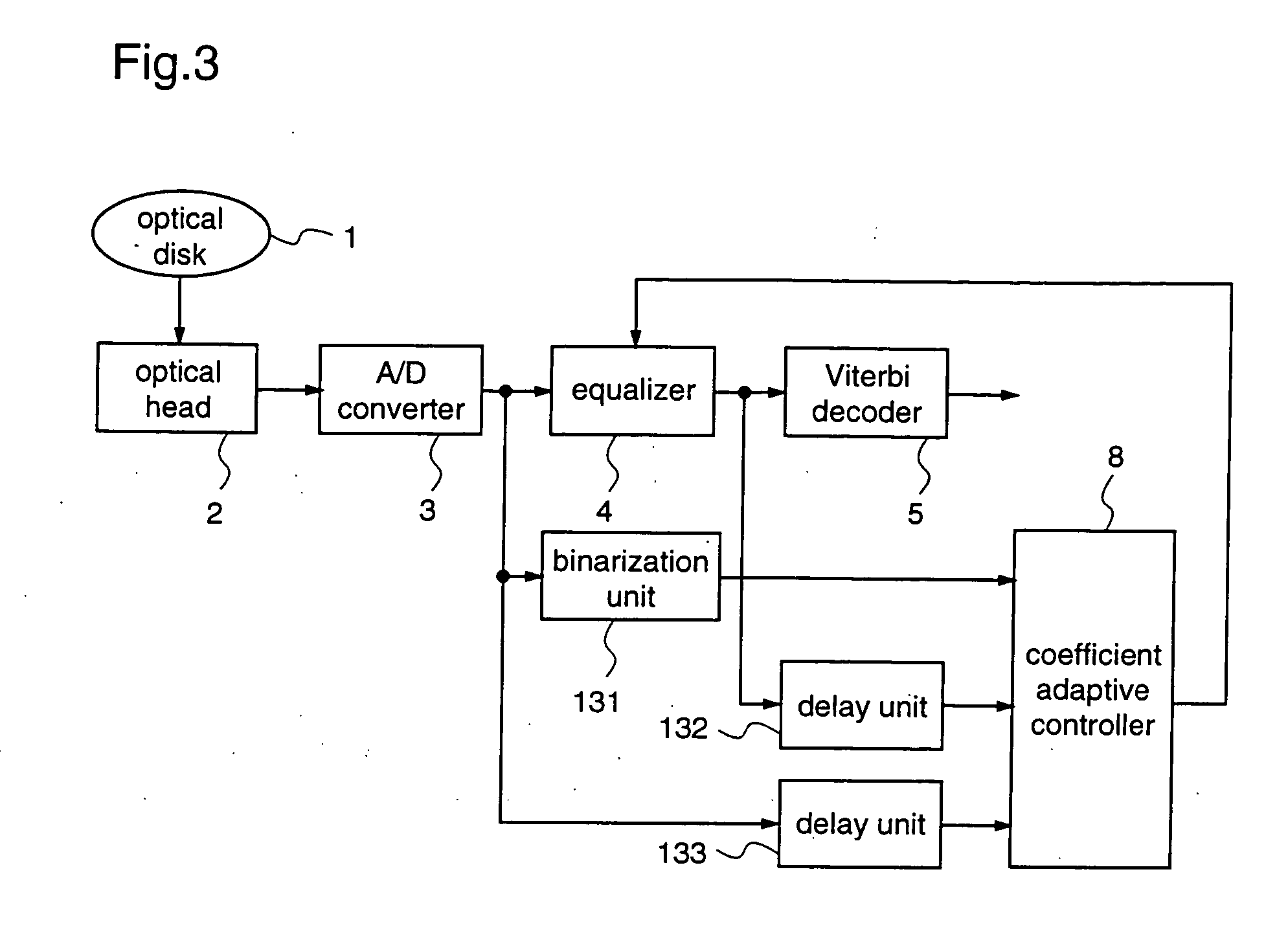Adaptive equalization apparatus and adaptive equalization method
a technology of equalization apparatus and equalization method, applied in the field of information playback apparatus, can solve the problems of increasing circuit scale, difficult to follow abrupt variations in waveform read by optical heads, and taking a long time to obtain optimal tap coefficients
- Summary
- Abstract
- Description
- Claims
- Application Information
AI Technical Summary
Problems solved by technology
Method used
Image
Examples
embodiment 1
Hereinafter, a description will be given of an adaptive equalization apparatus according to a first embodiment with reference to FIG. 1.
FIG. 1 is a block diagram illustrating the construction of an adaptive equalization apparatus according to the first embodiment. In FIG. 1, the components of the adaptive equalization apparatus, which are identical or corresponding to those shown in FIG. 10, are given the same reference numerals, and the explanations thereof are to be abbreviated.
A delay unit 111 delay-adjusts the output of the equalizer 4 to make the output coincide with the timing of the tentative decoded bit sequence in the process of maximum likelihood decoding. A delay unit 112 delay-adjusts the input to the equalizer 4 to make the input coincide with the timing of the above-described tentative decoded bit sequence.
When only one survival path is left in the trellis diagram, the Viterbi decoder 5 has to decode the bits corresponding to the survival path, and therefore, it ...
embodiment 2
Hereinafter, an adaptive equalization apparatus according to a second embodiment will be described with reference to FIG. 2.
FIG. 2 is a block diagram illustrating the construction of an adaptive equalization apparatus according to the second embodiment. In FIG. 2, the components of the adaptive equalization apparatus, which are identical or corresponding to those shown in FIG. 10, are given the same reference numerals, and the explanations thereof are to be abbreviated.
A binarization unit 121 binarizes the output of the equalizer 4. A delay unit 122 delay-adjusts the output of the equalizer 4 so as to make the output coincide with the timing of the output signal of the binarization unit 121. A delay unit 123 delay-adjusts the input to the equalizer 4 so as to make the input coincide with the timing of the output signal of the binarization unit 121.
Although it is considered that the bit sequence obtained from maximum likelihood decoding is closest to the recorded bit sequence, ...
embodiment 3
Hereinafter, an adaptive equalization apparatus according to a third embodiment will be described with reference to FIG. 3.
FIG. 3 is a diagram illustrating the construction of an adaptive equalization apparatus according to the third embodiment. In FIG. 3, the components of the adaptive equalization apparatus, which are identical or corresponding to those shown in FIG. 10, are given the same reference numerals, and the explanations thereof are to be abbreviated.
A binarization unit 131 binarizes the output of the equalizer 4. A delay unit 132 delay-adjusts the output of the equalizer 4 so as to make the output coincide with the timing of the output signal of the binarization unit 131. A delay unit 133 delay-adjusts the input to the equalizer 4 so as to make the input coincide with the timing of the output signal of the binarization unit 131.
Although it is considered that the bit sequence obtained from maximum likelihood decoding is closest to the recorded bit sequence, bit sequ...
PUM
| Property | Measurement | Unit |
|---|---|---|
| Euclidean distance d2 | aaaaa | aaaaa |
| length | aaaaa | aaaaa |
| Euclidean Distance | aaaaa | aaaaa |
Abstract
Description
Claims
Application Information
 Login to View More
Login to View More - R&D
- Intellectual Property
- Life Sciences
- Materials
- Tech Scout
- Unparalleled Data Quality
- Higher Quality Content
- 60% Fewer Hallucinations
Browse by: Latest US Patents, China's latest patents, Technical Efficacy Thesaurus, Application Domain, Technology Topic, Popular Technical Reports.
© 2025 PatSnap. All rights reserved.Legal|Privacy policy|Modern Slavery Act Transparency Statement|Sitemap|About US| Contact US: help@patsnap.com



